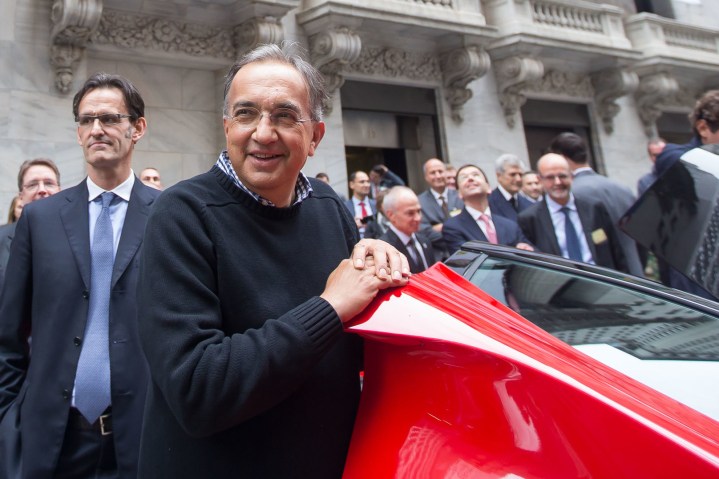
Former Fiat-Chrysler Automobiles (FCA) CEO Sergio Marchionne has died at 66, the company confirmed in a statement. Marchionne resigned from his position on July 21, less than a year before he was scheduled to retire, due to significant complications following shoulder surgery. The automaker’s board of management appointed Mike Manley, who previously ran the Jeep and Ram divisions, as Marchionne’s replacement during an emergency meeting.
Outspoken and influential, Marchionne had surgery on his right shoulder in early July. His recovery took an unexpected turn for the worse on July 21. Though FCA never released specific information about Marchionne’s health, Italian publication Lettera43 wrote he suffered a stroke during an operation to remove a tumor and fell into a coma. Doctors speaking off the record called his condition — and the brain damage caused by the stroke — irreversible.
“Unfortunately, what we feared has come to pass. Sergio Marchionne, man and friend, is gone,” wrote John Elkann, FCA’s chairman and a descendant of Fiat founder Giovanni Agnelli, in a heartfelt statement. After announcing Marchionne’s resignation, Elkann praised his management skills, intelligence, and generosity. “He taught us to think differently and to have the courage to change, often in unconventional ways, always acting with a sense of responsibility for the companies and their people,” he wrote.
Marchionne joined Fiat in 2003 as an independent director and became its CEO a year later. He was the main architect behind the merger with Chrysler in 2009. The troubled, bankrupt American brand would have vanished without the deal. Marchionne later worked tirelessly to achieve cost-saving, profit-boosting synergies between the two automotive giants and ruffled a few feathers along the way. He notably urged motorists not to purchase the electric 500e because Fiat lost $14,000 on every example it sold.
His team recently performed an about-face and embraced electrification. Marchionne’s last major public appearance was on June 1, when he presented FCA’s ambitious five-year plan. The road map calls for the launch of hybrid and electric models from key brands like Jeep, Maserati, and Alfa Romeo. It also outlines a technology offensive including semi-autonomous technology, a subscription service, and an in-car purchasing service for commodities like movie tickets, tolls, and parking.
Marchionne also ran Ferrari, which FCA spun off as an independent company in early 2016. The storied brand appointed Elkann as its chairman and Louis Camilleri, one of its board members and the chairman of Philip Morris International, as its CEO.



